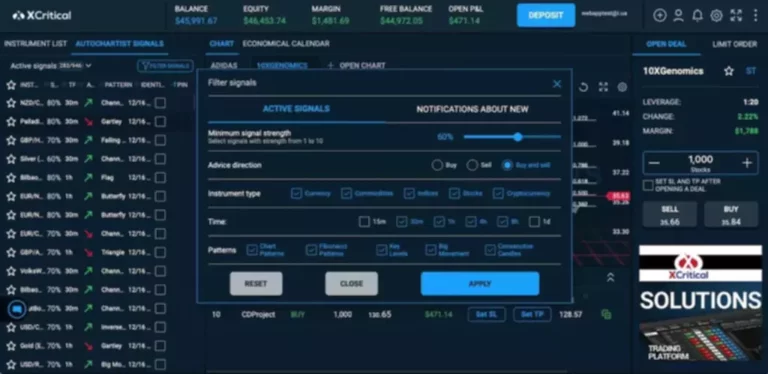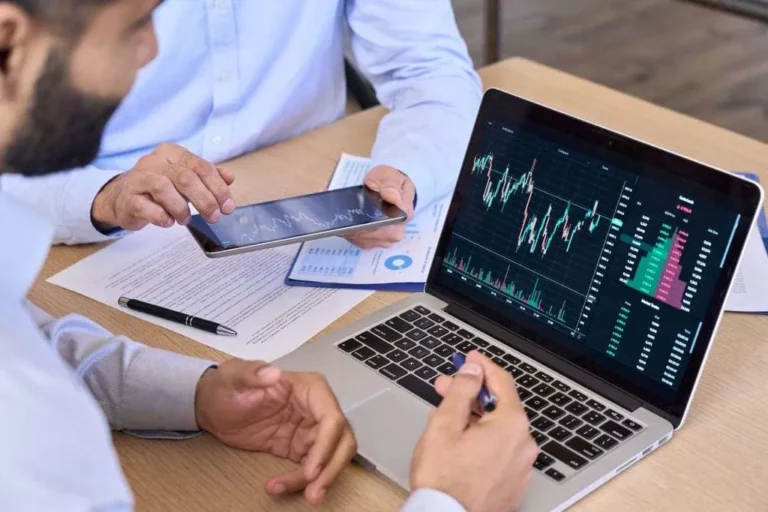FinTech
Automated Market Maker Amm Updated Definition
Due to the best way AMMs work, the more liquidity there is in the pool, the much less slippage large orders might incur. Non-Custodial – Decentralised exchanges don’t take custody of funds which is why they are described as Peer-to-Peer. A person connects instantly with a Smart Contract by way of their non-custodial wallet e.g MetaMask granting entry privileges for as long as they want to work together with the Contract. Ethereum’s scaling issues have turn into an opportunity for other chains to compete. The AMM model is the default for decentralised exchanges however given the composability of DEFI completely different purposes have emerged. The conventional mannequin for doing this is recognized as a Centralised Exchange, or CEX.
AMM protocols are Web3 platforms that facilitate token trading in a decentralized setting without TrafFi market-makers. Although impermanent loss is an inherent danger when it comes to decentralized buying and selling, this danger can be somewhat restricted by utilizing versatile swimming pools or through conservative user behavior. As our article exhibits, computerized market makers have established themselves as an integral part within the DeFi neighborhood. Various models are used and the approaching years will present which protocols are the most effective. As a outcome, for this model to work, token A and token B must be supplied within the correct ratio by liquidity suppliers, and the quantity of liquidity must be enough.
It’s a factor of the automated nature of DEFI and the volatility of the price of asset pairs. One of the particular issues of the AMM method to decentralised exchanges is that for very liquid swimming pools much of the funds are sat there doing nothing. This is as a outcome of nearly all of the time price strikes in a comparatively slender range, and the pool will shortly rebalance. If traders buy BTC they diminish that side of the pool and enhance the pool of USDT increasing the relative value of BTC. This also incentivises LPs to provide more BTC as a end result of liquidity provision is predicated on the proportion of the overall pool you add, not the particular price at the time. CEXs are also infamous for exploiting markets to conduct insider trading.
What Is Market Making In Crypto?
It must find a method of meeting the selling and shopping for requests of merchants, which in flip plays into the pricing of the said asset. Where a CEX has an Order Book managing offers from patrons and sellers through a centralised system a DEX makes use of an Automated Market Maker (AMM). An AMM combines Smart Contracts and algorithms to incentivise crypto holders to provide liquidity for buying and selling pairs and mechanically adjusts costs primarily based on the altering liquidity ratio. An automated market maker, otherwise often known as an AMM, is a means of providing cryptocurrency buying and selling with out the need for an middleman. AMMs mix Smart Contracts and incentives for liquidity provision to automate cryptocurrency trading and disrupt the standard centralised trade mannequin, replacing it with the DEX.

For example, a mixture of CPMM and CSMM ensures infinite liquidity while decreasing worth slippage risks. This mannequin is much like the CPMM, however the multiplication in the formulation is replaced with addition. The liquidity always equals the total amount of token A plus the entire quantity of token B.
What Are The Risks Associated With Amms?
When there are three or more tokens in a pool, it is best to use the constant imply mannequin; the constant is the geometric mean of the product of the quantities of the variety of tokens within the pool. They see them as a key part of the decentralized finance (DeFi) movement, which aims to democratize finance and cut back reliance on conventional financial intermediaries. One of the vital thing tendencies in the AMM area is the development of multi-chain and cross-chain AMMs. As the crypto world turns into more and more fragmented with a number of blockchains, there’s a growing want for AMMs that may function throughout completely different chains. Note that the equation highlighted for instance is just one of the current formulation used to stability AMMs.
The price you anticipated and the worth you get may be different, and that variation is called slippage. Slippage is exacerbated by worth volatility as traders affect the price in several directions on the identical time. While sensible contracts are engineered to revolutionize trading and supply liquidity, imperfections in the sensible contract or unforeseen market turbulences can be detrimental.

Since there’s no order guide, there are also no order types on an AMM. What value you get for an asset you need to buy or sell is decided by a method instead. Although it’s price noting that some future AMM designs might counteract this limitation.
What’s The Full Type Of Amm?
AMMs emerged as a novel solution to the liquidity and effectivity points plaguing decentralized exchanges. They replaced the order guide mannequin with a mathematical formula to find out the worth of property. From the explanation above, it is clear that crypto market makers work across the clock to scale back value volatility by providing the appropriate stage of liquidity. What if there was a approach to democratize this course of such that the common individual might operate as a market maker? As its name implies, market making connotes the process concerned in defining the prices of assets and concurrently providing liquidity to the market. In different words, a market maker does create liquidity for a monetary asset.
- These automated market makers, per their name, change the ecosystem parameters in response to market circumstances.
- DeFi represents the cutting edge of monetary innovation on decentralized exchanges.
- Choice of tokens – There is a big and growing variety of cryptocurrencies however solely a tiny proportion are supported by centralised exchanges.
- This, nonetheless, must be balanced in opposition to paying higher charges for more transactions.
- Hybrid automated market makers are able to changing their working principle primarily based on scenarios.
- Automated Market Makers (AMMs) have undeniably reshaped the crypto trading panorama, providing a decentralized and efficient solution for merchants and liquidity providers alike.
First, they ensure constant liquidity, as the good contract at all times stands able to facilitate trades, whatever the measurement. This contrasts with conventional order e-book exchanges, where a lack of consumers or sellers can result in excessive slippage. Uniswap’s user-friendly interface and permissionless buying and selling have made it a favorite among crypto lovers. It permits anybody to swap ERC-20 tokens instantly from their wallets, and anybody can turn into a liquidity provider and earn fees from trades.
What Are Automated Market Makers (amm)?
Traders are drawn to Curve by low slippage and fees and liquidity suppliers are attracted by high yields and minimal impermanent loss. Every AMM makes use of a set mathematical formulation that helps determine the worth of assets within the AMM’s liquidity pools. Every time a consumer desires to commerce a token on an AMM, they add an asset to the liquidity pool. As it changes the constant, say k, the price of the property is determined to take care of the steadiness of the pool. This is where costs on AMMs can differ from the more fastened ones trading on exchanges. This leg, or rather the use-case of automated market makers, is at the core of liquidity pools.
This has enabled the creation of DEX aggregators like 1Inch that can automatically search throughout individual decentralised exchanges to find and execute the most effective value swap for you. The job of the algorithm is to maintain k fixed by adjusting the costs of x and y in proportion to trades and incentivising Liquidity Providers (LPs). The magic that enables a decentralised change to automatically create markets without counting on the normal middleman is a mixture of maths and code. Aside from this, there might amms crypto be the ever-present threat of hackers exploiting sensible contract vulnerabilities, such as loopholes within the protocol’s code. The only method to reduce this threat is to do your own research or DYOR, and only deposit your funds in additional reputable initiatives which have been audited by proficient smart contract auditors. Popular Ethereum buying and selling pairs on CEXs don’t accommodate giant buying and selling orders in a preferable price range.

The attract and transformative potential of an automatic market maker in the DeFi landscape is simple. However, as with most revolutionary technologies, they come with their justifiable share of vulnerabilities. The complete assets within a liquidity pool, sometimes called its ‘depth’, decide the size of a trade that could be executed with out inflicting significant price fluctuations. AMMs just like the fixed product market marker (CPMM) of Uniswap V2 or Balancer operate using this method.
Because the property in the pool are all basically trending toward the same worth, it is rather unlikely that the worth of any token within the pool will slide too far off stability. DAMMs stand because the vanguard in the ever-evolving world of automated market makers. By closely monitoring market behaviors, they recalibrate their algorithms to supply more accurate and aggressive pricing. Impermanent loss occurs when the prices of two assets in a liquidity pool change, inflicting the worth of 1 asset to increase whereas the opposite decreases. This occurs as traders purchase one token in the pool while selling the other.
Before AMMs got here into play, liquidity was a challenge for decentralized exchanges (DEXs) on Ethereum. As a new technology with an advanced interface, the number of consumers and sellers was small, which meant it was troublesome to search out sufficient individuals keen to trade regularly. AMMs repair this drawback of restricted liquidity by creating liquidity pools and providing liquidity suppliers the incentive to supply these pools with assets. The more property in a pool and the extra liquidity the pool has, the simpler trading turns into on decentralized exchanges. Automated market makers (AMMs) enable digital belongings to be traded with out permission and automatically by utilizing liquidity pools instead of a standard market of buyers and sellers.



Bài viết mới nhất
How to get the perfect bi woman for your couple
How to get the perfect bi woman for your couple Finding an[...]
Take the first step with hookup website you today
Take the first step with hookup website you today When it comes[...]
what’s a milf and just why if you date one?
what’s a milf and just why if you date one? A milf[...]
Business Functions and Organizations
Whether the business is a huge corporation or possibly a small internet[...]
Safe and sound Data Operations
Safe and Secure Info Management Data breaches, ransomware attacks, adware and spyware,[...]
Exactly what are Business Values?
Essentially, business ethics will be the moral principles that can be guidelines[...]
Denver Glucose Babies& Glucose Daddy Denver On Line [month] 2023
Denver Sugar Babies& sugar daddy denver On Line [month] 2023 Webpage Contents[...]
LatinAmericanCupid Review – Legit dating site or fraud? |
A lot of men in the us are seeking an attractive Latinalicous[...]